My Top 10 Games of 2022 (GOTY)
My Top 10 Games of 2022 (including Honorable Mentions and other shoutouts).
 UnexpectedGames
UnexpectedGames
Just a friendly bear who works in financial reporting that would rather be playing, writing or talking about video games. https://twitch.tv/unexpectedenemy
My Top 10 Games of 2022 (including Honorable Mentions and other shoutouts).

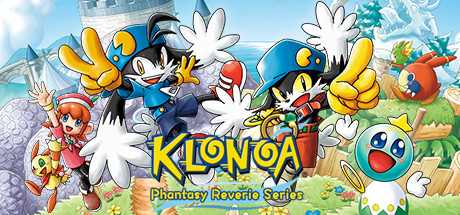
It’s a miracle that the Klonoa Phantasy Reverie Series exists. Klonoa: Door to Phantomile, specifically, is the first game to ever make me cry. As someone who grew-up with 2D platformers, Klonoa was the first game in the genre that felt like it pushed the medium forward. With its legacy rooted in games like Ninja Gaiden, Klonoa felt more meaningful and unique than its contemporaries with its 2.5D perspective and emotionally-driven story. I streamed an entire 100% replay of the first game from the collection on my Twitch channel over the summer and it was such a joy to revisit. With that said, I didn’t think it would be fair to include this package on my top 10 list, considering it’s a re-release of decades-old games. If you walk away from this post and feel compelled to do anything, please buy/support the Klonoa Phantasy Reverie Series so the series doesn’t go dormant for another ten years.

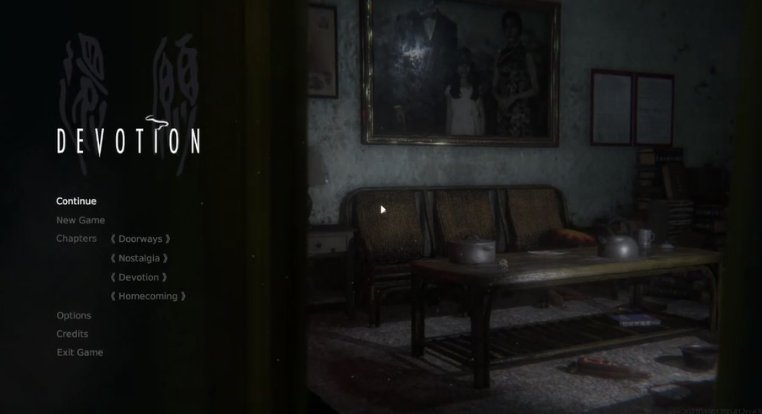
Devotion, developed by Red Candle Games, is arguably my favorite game of the year that I played for the first time that didn’t technically release in 2022 (next to Ys IX: Monstrum Nox). Devotion has a really interesting development history. It was previously removed from Steam in China and today, it can only be purchased from the developer’s website (you can find the game here). Devotion is a first-person horror game that’s beautifully paced with an amazing, yet tragic story. The game takes place in one family’s apartment during particular periods of time. To unravel the mystery, the player must venture back and forth between various apartment rooms, solving puzzles and finding clues. There’s a wonderful sense of place in Devotion considering it takes place in one location. The game has so many memorable moments too (like the 2D picture book sequence) that left me speechless. I streamed Devotion on my Twitch channel on Halloween night and finished the game in one sitting. Between Devotion and their previous game, Detention, Red Candle Games is making some of the best horror games on the market. If Devotion released in 2022, it easily would have made my top 10 list for the year. I can’t wait to see what this developer does next and hopefully their next project doesn’t get banned on Steam.
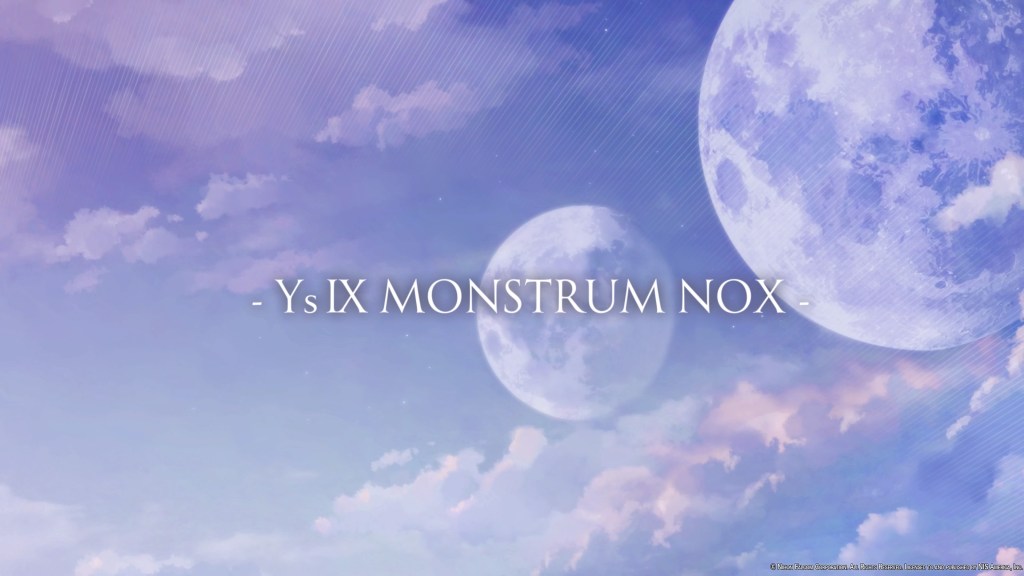
Ys IX: Monstrum Nox, developed by Falcom, is the latest entry in the long-running Ys franchise and the follow-up to Ys VIII: Lacrimosa of DANA. Ys IX, for better or worse, still retains the party-based gameplay found in the more recent titles. If you’ve played the previous entry, Ys IX is essentially the same game but instead of a tropical island, Adol and friends have found themselves in a prison town. Ys IX has often been criticized for its somewhat bland look and while a dreary fortress town isn’t as appealing as a tropical island, the prison city isn’t without its charm. From my recollection, Ys IX is the first Ys game to recognize most of Adol’s previous exploits and uses it as a focal point in the story. Most Ys titles are treated as standalone adventures with few references to previous games. In Ys IX, however, Falcom seems to have taken a big-picture approach, almost treating the game as if it was one of their Legend of Heroes titles. This decision to make Ys more dialogue and story heavy hasn’t sat well with the older fanbase, however, I don’t mind the approach they’ve been taking as of late. Ys IX: Monstrum Nox occupies a specific part of my childhood I don’t want to lose sight of. It harkens back to a time of little responsibility, cozy JRPGs and endless summer months. I’ll always make time for a Falcom game and I can’t wait to see what’s next in Ys X: Nordics.
A few other games I finished in 2022 that didn’t release this year that I also really liked were UNSIGHTED, Marsupilami: Hoobadventure, Solar Ash, Unpacking and The Gunk. I wrote more about them in each respective quarterly post (which are linked below), so feel free to read more about them there.

Similar to MinnMax’s “Two Tens“, I was originally going to make a top 20 list of 2022. There were just too many great games I played this year and making my top 10 was hard enough. To save time, I also copied what I had originally wrote for each of the following games, only slightly edited. If you want to read what I had to say about the following games in more detail during Q1, Q2, Q3 and Q4 of 2022, you can read about it here, here, here and here, respectively! Also, if you want to read my companion post to this list, you can my thoughts on gaming in 2022 here. So, here are 10 honorable mentions that nearly made the cut, but for whatever reason, they just weren’t top 10 material for me:
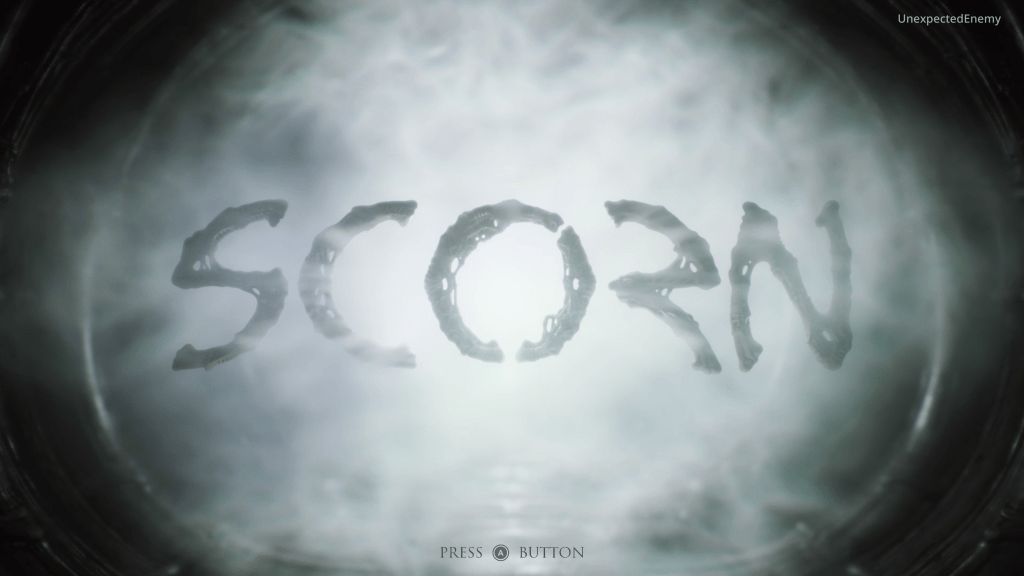
HM #10: Scorn, developed by ebb Software, is a first-person survival horror game that’s clearly inspired by H.R. Giger art. It’s a disgusting, gross experience that takes the minimalistic approach in every aspect of its design and presentation. There’s no dialogue or menus outside of the title screen and the various options/configurations you can toggle. It arguably commits to the “single shot” approach more so than even 2018’s God of War. The game is dripping with atmosphere, but it’s a hard sell for non-horror enthusiasts. Some have compared it to MYST, but considering the game has combat and guns, it actually reminded me a bit of From Software’s Shadow Tower Abyss for the PS2 (which never released in the west). Scorn is a very cryptic game, but it’s fairly linear and the puzzles are mostly simple (outside of the start of the game). The guns are weird and fighting the monsters feels messy and janky, which makes sense considering you’re playing as a skinned corpse of sorts. I completed the game with all Achievements unlocked. I can’t say I loved Scorn, but I’m glad it exists and was happy to experience whatever it was trying to accomplish.
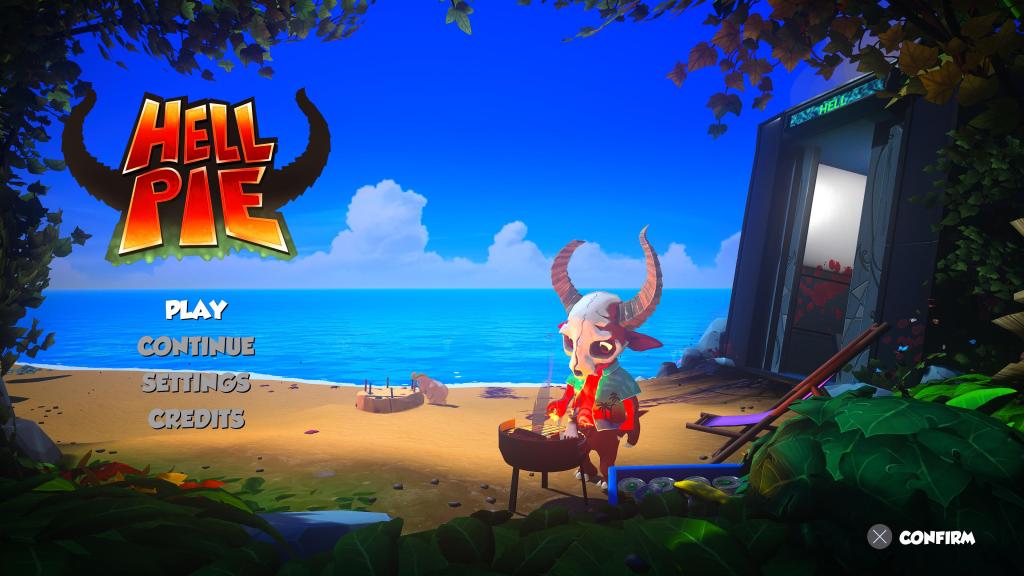
HM #9: Hell Pie, developed by Sluggerfly, is a disgustingly well-made 3D platformer made-up of all of the best ingredients from the past. While Hell Pie does have a story, it’s mostly a collect-a-thon through and through. You play as an intern at Hell Inc, the official headquarters/workplace of the damned. You’re tasked to collect ingredients from 4 themed worlds so that you can bake the ultimate birthday dessert for Satan himself. To aid you on your quest, you’re chained to a cute cherub friend who you can use as both a grappling hook and a weapon. The character movement and how it generally feels to control your character is one of the most important aspects of a 3D platformer and Hell Pie nails it. The open environments are fun to explore and the stages found within them are extremely well-designed, too. The game’s just kind of gross and the tone can be a bit off-putting at times, however, I did complete the game at 100% with the Platinum trophy earned. Otherwise, it’s one of the best 3D platformers of the year.
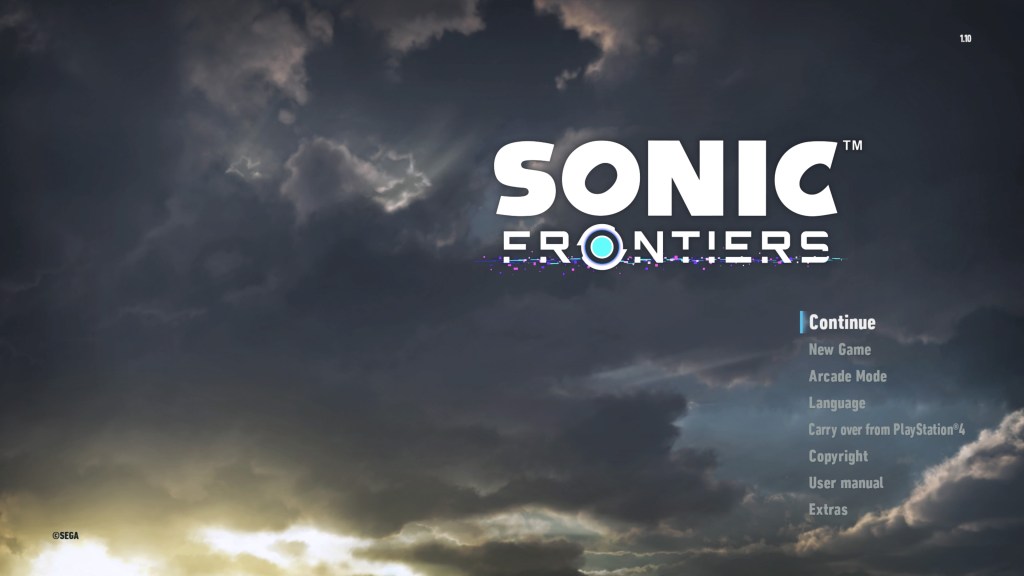
HM #8: Sonic Frontiers, developed by Sonic Team, is sort of a mess, but I felt compelled to see it to the end. I guess I liked it well enough to complete the game at 100%, along with obtaining the Platinum trophy, but it’s also not a very difficult game to complete? Although the game justifies its aesthetic/look narratively, I still don’t generally like the game’s presentation. While the “open-zone” approach grew on me the further I progressed, the layout of each island just felt sloppy. When the map is fully uncovered, I think the designers did a good job at funneling the player from one platform sequence to the next, however. I found the traditional 3D Sonic levels (Cyber Space) to be extremely disappointing and easy to S-Rank, although there is some good music housed in these stages. Sonic Frontiers is a decent attempt at redirecting the course of the franchise, but I’m not sure if this is the path it should stay on. The game’s filled with callbacks and references to previous games and it’s nice to see Sonic Team attempt to bridge all of the stories together, but the game itself is a mess. Most of the new ideas felt half-baked and the things I liked about modern 3D Sonic titles that are present here just don’t hold-up to games like Sonic Generations, Colors or Unleashed.

HM #7: Neon White, developed by Angel Matrix/Ben Esposito, is a frenetic, first-person, genre-blending shooter of sorts. As Giant Bomb unofficially coined, Neon White is a “videogame ass videogame”. You play as White, a former assassin who, along with his cohorts, blew a mission big time during their final hours and found themselves dead. Chosen in purgatory to hunt demons in heaven, they’re given a second chance at redemption. Unlike the story, the gameplay and level design is where the game shines brightest. Neon White feels like if Killer7 collided with the Sega Dreamcast and I mean that in the best way possible. Levels are short & sweet and alternating between your weapons to traverse a stage feels intoxicating once you master the controls. It’s a satisfying and rewarding experience, but it’s a bit too long for my liking and I could have done without the characters and some aspects of the story. I completed Neon White at Rank 1 with either Gold/Ace ranks, collected all of the gifts and completed each character’s side quests.
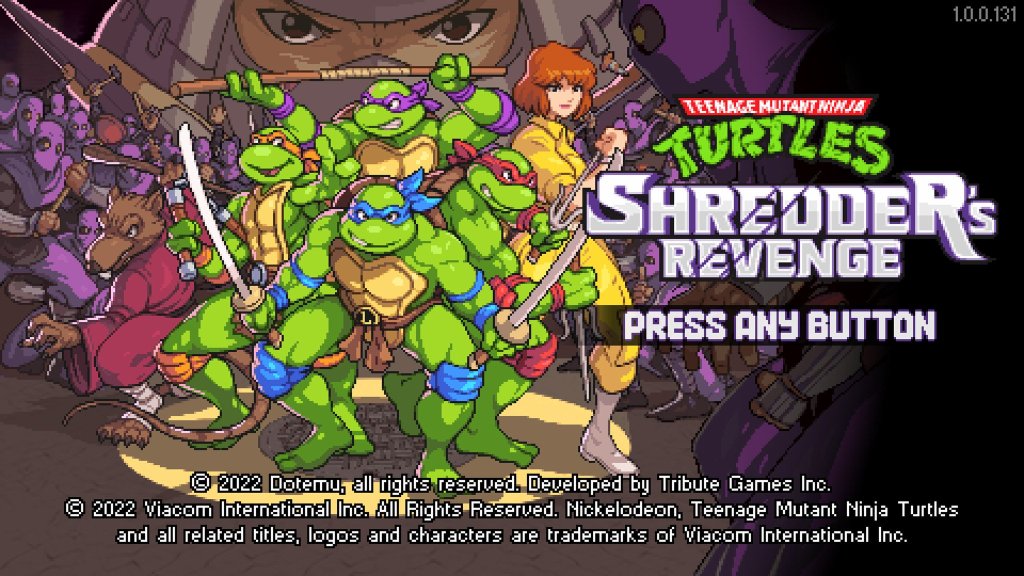
HM #6: Teenage Mutant Ninja Turtles: Shredder’s Revenge, developed by Tribute Games, is a solid follow-up to the arcade/console TMNT beat ’em ups from my childhood. It feels like the natural step/progression from Turtles in Time/The Hyperstone Heist but with some modern sensibilities. Shredder’s Revenge probably has the most robust and “complicated” move-set in the entire franchise, but it’s still easy to pickup & play like most classic beat ’em ups. The more advanced “tech” might not be as interesting as the types of combos, juggles or wall bouncing techniques you’d find in say Streets of Rage 4, but there’s a nice middle ground here that’s approachable for all types of players. With that said, I didn’t feel compelled to return to Shredder’s Revenge after my initial playthrough. I wish the collectibles were more meaningful or served some greater purpose and I found the additional challenges (like beating stages without getting hit) to be more frustrating than fun. I did play the game solo, so perhaps it’s a better experience with friends on a couch.

HM #5: Ghostwire: Tokyo, developed by Tango Gameworks, is a first-person, action-adventure game that takes place in a post-apocalyptic, modern-day Tokyo. Ghostwire is quite the departure from Tango’s previous games. While their wheelhouse is certainly horror, The Evil Within was a 3rd-person, RE4-style, chapter-by-chapter, survival horror game. Ghostwire, however, is a modern-day open world game, but with a twist. The entire game is in first-person and instead of guns/melee weapons, you’re equipped with elemental magic spells, charms and an otherworldly bow. The animations in Ghostwire are excellent and exploring the faithfully recreated city streets of Tokyo feels incredibly immersive. From the hand-weaving spellcasting animations to the slender, umbrella-wielding demons slowly patrolling the streets; Ghostwire is a super stylish adventure game with a lot of personality. Unfortunately, the story isn’t very interesting, nor is the protagonist. Despite some interesting side quests that litter the drenched back alleys of Tokyo, Ghostwire takes the more traditional, “Ubisoft-style” open-world approach when it could have been something more. I rolled credits on Ghostwire: Tokyo and did a chunk of the side content, but did not go back to 100% the game yet.

HM #4 Horizon Forbidden West, developed by Guerilla Games, is the follow-up to Zero Dawn, a post-apocalyptic, action-adventure epic seeped in science fiction. Horizon Forbidden West starts in familiar territory, finds its stride halfway through but ends on a somewhat disappointing note. The beginning area, The Daunt, which also acts as a “tutorial” of sorts, feels like an extremely condensed version of Zero Dawn. The majority of the game takes place in the “west”, however, and has the player trekking across wastelands, deserts and jungles in search of subordinate functions. The goal of the game is to collect parts of a fragmented AI in hopes of restoring the Earth to its former glory. Various clans with their own cultures and beliefs have settled in the areas where these subordinate functions are housed and that’s where the majority of the game takes place. My favorite part of Horizon Forbidden West was the second half of the game where Aloy tracks down the subordinate functions. It reminded me of a classic JRPG quest where your goal was to journey to a variety of exotic locales in search of elemental stones. It’s a shame the game sort of nosedives into nonsensical SCI-FI territory in the latter half, but at least the performances and spectacle of it all remains strong in the final act. Finally, there’s just too much focus on gear/loot, damage types and enemy resistances; similar to the recent God of War games, there’s just too many RPG elements when there doesn’t have to be. The combat also doesn’t feel as satisfying/rewarding as say Monster Hunter, although the machine designs are still great. I rolled credits on Horizon Forbidden West on Hard difficulty after 50+ hours, but walked away from the experience feeling conflicted.

HM #3: God of War Ragnarök, developed by Santa Monica Studio, is the follow-up to the 2018 reboot of sorts, God of War. Taking place shortly after the events of the first game, Kratos and Atreus must continue their journey in hopes of preventing Ragnarök, as the name applies. Ragnarök feels like an impossible game to compete with in terms of budget and production values. The game is simply gorgeous, the performances are compelling, the side quests are meaningful, the soundtrack by Bear McCreary is epic, and the game just feels like a premium experience that you can’t find anywhere else. I love character-action games and as someone who grew-up playing the original God of War games on the PS2 (along with games like Devil May Cry), God of War has always occupied a space in my mind that I’ve always liked/appreciated, but never loved.
These recent God of War games are becoming much more RPG-ish than what’s typically expected from the character-action genre. There’s just too much focus on gear/loot and color-coded enemies, which isn’t a direction I particularly agree with. The thing I’m most disappointed with in Ragnarök is how it doesn’t feel like it utilizes the power of the PS5, perhaps due to the fact that it had to be developed for the PS4 as well. The promise of no load times, seamless environments and other “next-gen” features feels lacking here (although the loading is very fast on the PS5 and the haptic feedback feels good). There are traces of “what could have been” in the Vanaheim realm which gives the player the ability to change the time of day (and it’s arguably the most interesting area in the game). I liked Ragnarök well enough and I’m glad I got to play it before the year’s end. I completed the game on No Mercy difficulty at around 40 hours and did a lot of the side content. It still feels good to toss and retrieve the Leviathan Axe, swing the Blades of Chaos around and smash treasure chests with your bare fists and isn’t that all that matters at the end of the day?

HM #2: Splatoon 3, developed by Nintendo, is arguably Nintendo’s most important IP to date. The series has sold extremely well worldwide and in Japan, it’s become a cultural phenomenon. Despite originally debuting on the Nintendo Wii U, Splatoon, like other games previously shipwrecked on Nintendo’s failed platform, was given a second chance on the Nintendo Switch. While it’s mostly known for its competitive multiplayer modes, the developers continue to provide single-player experiences in an attempt to build the world around the competitive modes while simultaneously teaching players how to play the game. Splatoon’s single-player campaign has more or less been a glorified training tutorial for the multiplayer modes and while it’s the best its ever been in Splatoon 3, it could have been so much more. I completed Splatoon 3 at 100% and finished the secret challenge level, too. You can read more of my thoughts on the game here.

HM #1: Tinykin, developed by Splashteam (of Splasher fame), is a classic 3D platformer that feels straight out of the PS2/GC/Xbox era. While Tinykin shares some similarities to Pikmin, it’s more rooted in traditional collect-a-thons like Banjo-Kazooie and Jak & Daxter. In Tinykin, you’ll discover Pikmin-like creatures that can be used to traverse the environment in a variety of ways. Each Tinykin type grants the player new abilities; red Tinykin are used to destroy objects and green Tinykin can build ladders to reach new heights, for example. The game’s “Honey I Shrunk the Kids” approach lends itself to a great sense of scale with tucked-away secrets and collectables in nearly every nook & cranny of the house. You also obtain a bar of soap at the start of the game which allows you to freely skate around the environments. Tinykin is one of the most immediately satisfying games I’ve played all year. It’s a constant stream of dopamine, particularly for completionists or for those who simply enjoy collecting stuff. It also has the satisfaction you get for delivering items to your ship in Pikmin, but without all of the micromanaging, strategy and stress that comes with it. I just wish I cared more about the story and its characters. There’s an attempt at world-building within the house with its various bug clans and their ways of life, but for whatever reason, everything went in one ear and out the other. I completed Tinykin at 100% with all of the Achievements unlocked.

2022 was another amazing year for games. There were so many games I didn’t make time for this year, but if I did, my top 10 list (including my honorable mentions) could have been wildly different. I know what I like at this stage of my life and games like The Punchuin, The Spirit and the Mouse, Shin-chan: Me and the Professor on Summer Vacation – The Endless Seven-Day Journey, NORCO, Citizen Sleeper, Lil Gator Game, Pentiment, Sifu, Vampire Survivors, Xenoblade Chronicles 3, Signalis, or the dozen or so Square Enix RPGs that released this year, for example, could have easily replaced some of the games I’m about to list below. I had two to three criteria for a game to make my top 10 list this year, however; 1) I had to have finished/rolled credits on the game, 2) the game had to keep me up past my bed time and 3), the game had to make me put my controller down in awe. So, without further ado, here are the 10 games that resonated the most with me in 2022:
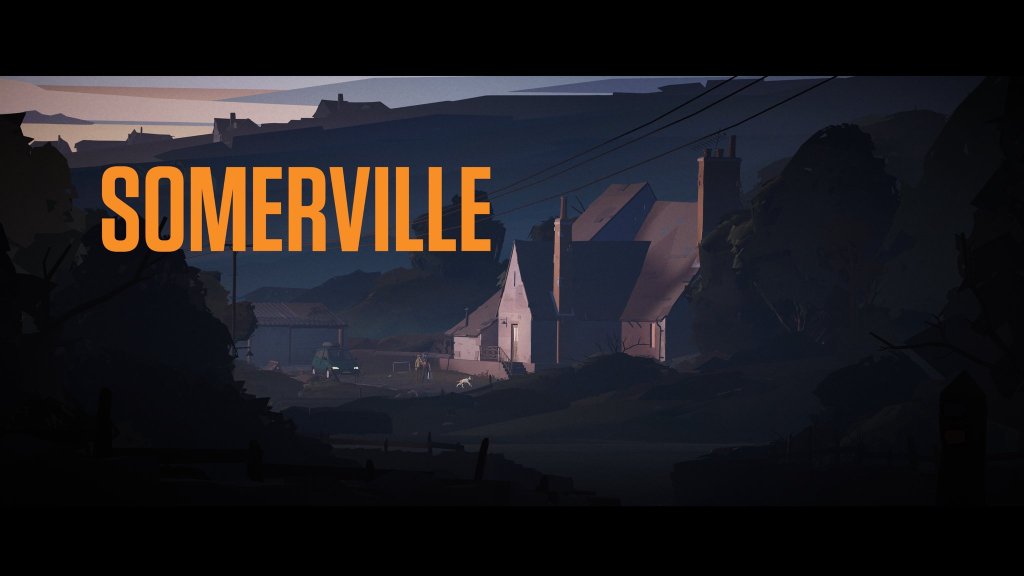
#10: SOMERVILLE, developed by Jumpship, is the debut indie game from a new studio lead by one of the cofounders of Playdead (of Limbo/INSIDE fame). While not as polished as the aforementioned titles, SOMERVILLE is the type of game I wish we would get more often (although I’d imagine these types of games aren’t easy to make). It’s a minimalistic adventure game set in a sci-fi, post-apocalyptic world. There’s no dialogue or written text, everything is told through environmental storytelling and audio/visual cues. If you’re not familiar with the subgenre, SOMERVILLE is rooted in cinematic platformers like Out of this World/Another World, Heart of Darkness or even Flashback, otherwise known as the book of Éric Chahi. Despite some rough edges, I really liked SOMERVILLE. There’s so many moments where I put the controller down just to soak in the atmosphere, particularly due to the sound design. It is my “Little Nightmares II” of 2022. It’s also the perfect Game Pass game as you can finish it in about 3-4 hours. I finished the game once and similar to my time spent with Tunic, I’ve yet to see the true ending since the solution is relatively cryptic. I can’t imagine these games are easy to make, but when they come around, especially if they’re done right (or are from a studio with a pedigree for it), there’s really nothing else like it.
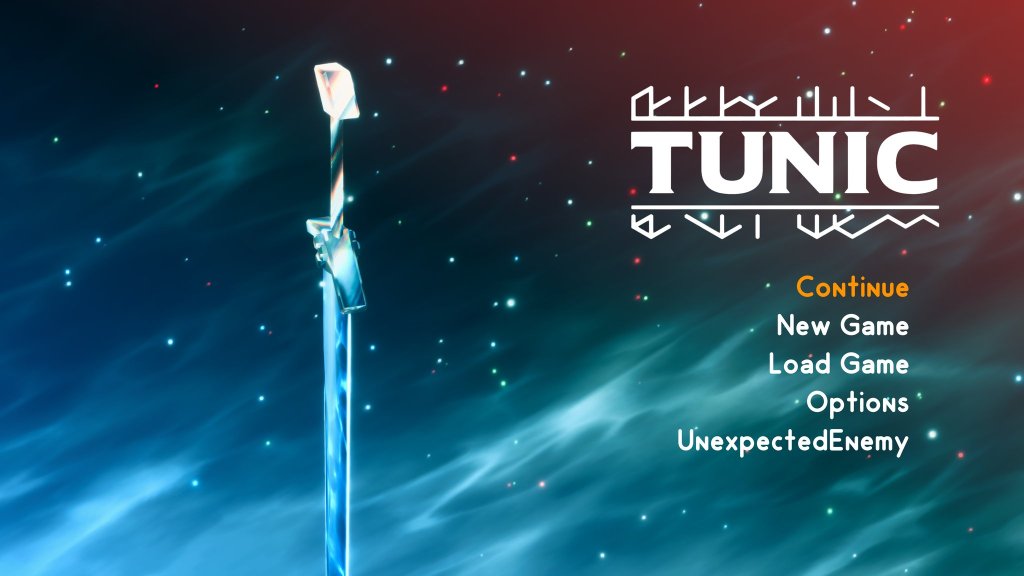
#9: Tunic, developed by Andrew Shouldice and company, is a top-down, Zelda-like with some cryptic puzzles akin to the type of stuff you’d find in FEZ or The Witness. It’s almost best if I say less about the game as it’s the type of experience that’s better if you go into it mostly blind. While Tunic clearly takes inspiration from a lot of classic and contemporary games, it still manages to carve out its own distinct look and feel. The soundtrack, by Janice Kwan and Lifeformed, is also excellent and the sound design, particularly when you’re activating some sort of mechanism, shrine or the like, is bassy and crunchy. One of the more unique aspects of Tunic is how the game teaches you how to play it. In Tunic, instead of forced tutorial windows popping up to explain things, the game gradually unfolds its mechanics and design language through an in-game manual/booklet that must be collected and pieced together page by page. These pages are in a fictional language, so nothing is deliberately explained. Instead, the player must use the images and iconography to decipher each page’s purpose and meaning. Unfortunately, the true ending is difficult to achieve unless you’re really tuned into some of the game’s deeper mechanics, so I’ve yet to see it. With that said, rolling the initial credits was one of my most memorable experiences of the year.
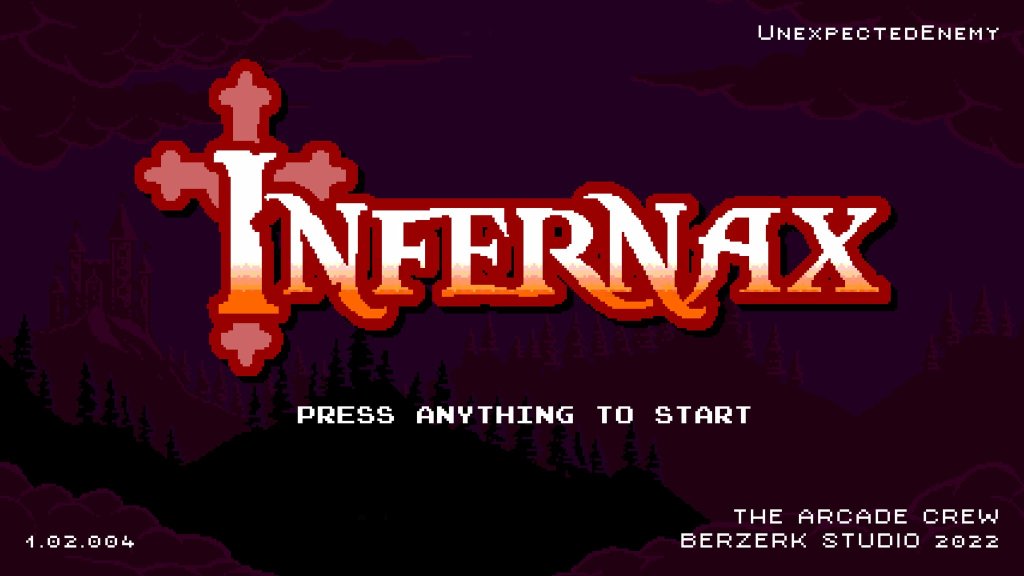
#8: Infernax, developed by Berzerk Studio, is a 2D action-platformer that wears its Zelda 2: The Adventures of Link and Castlevania II: Simon’s Quest inspiration very closely on its sleeve. You’ll travel from one town to the next, solving simple quests for townsfolk while upgrading your character along the way. Each of the game’s main dungeons rewards players with new traversal abilities (such as the ability to dash or jump higher) that culminate in challenging boss encounters. One of the most interesting aspects of Infernax, however, is its morality system. Over the course of the game, you’re presented with choices that will test your morale compass (which essentially boils down to either being “good” or “evil”). These decisions ultimately impact the game’s ending, but depending on the choices you make, you’ll encounter different characters, enemies and scenarios (such as flooding a town by destroying a dam). There’s also a day/night cycle where enemies become stronger/more frequent at night. Infernax is the complete package; the character sprites are chunky, the boss designs are disgustingly well-made, the controls are tight, the pacing feels just right and the game has multiple endings. I completed the game on Classic mode (which just means reloading at a save-point when you die) and saw two of the endings, both of which were aligned with being “good”. If you could only play one retro-inspired romp from 2022, I can’t recommend Infernax enough.
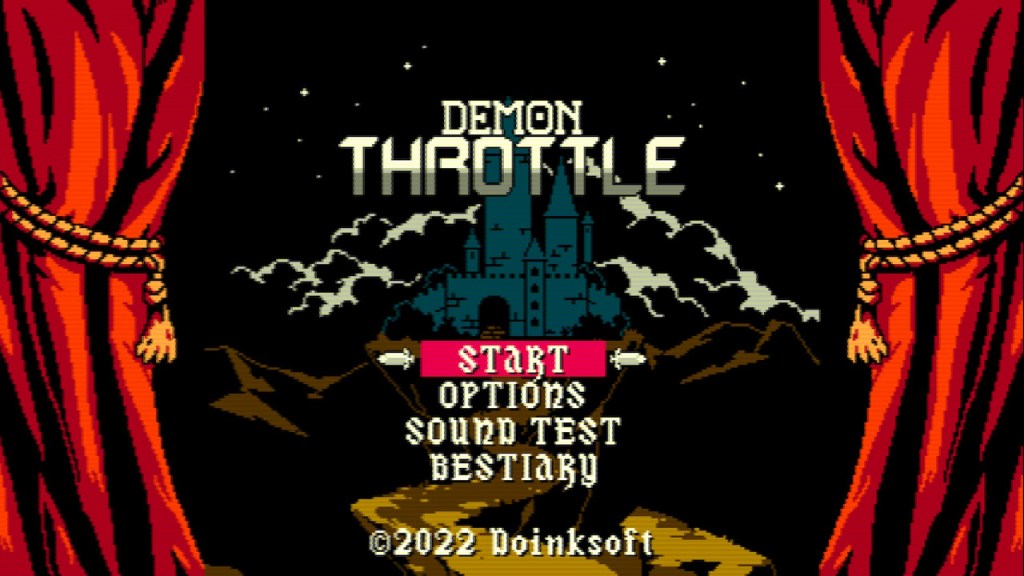
#7: Demon Throttle, developed by Doinksoft, is a 2D, top-down, auto-scrolling arcade shooter. Interestingly enough, Demon Throttle can only be purchased physically. The initial pre-order window has since passed, but apparently only 10,000 copies were made. I was fortunate enough to secure a copy at release and the game comes in a special package from Special Reserve Games, which even includes a manual! Demon Throttle is a classic arcade shooter through and through. You play as two characters that you can switch between on the fly; a gunslinger who’s lost his wife and a vampire lady who’s had her chalices stolen from an evil lord. The chalices are actually a big part of accessing the game’s best ending. On each of the four levels, a secret staircase can be found which leads the player to an underground area where the chalice can be collected. These hidden staircases are randomly placed during each playthrough (although there’s only a few spots where they can appear in each stage, so it’s not exactly rogue-like).
I completed the game multiple times; one playthrough on Hard difficulty and another run on Normal with the true ending (which requires all of the chalices collected). Demon Throttle has a deceiving amount of content/replay value. The more you play the game, the more things you unlock; including a Sound Test, a Bestiary, screen boarders and even new stage variants. Demon Throttle is the ultimate “just one more run” type of game too and it has an amazing “WARNING! BOSS APPROACHING!” title-card sequence at the start of each boss fight. If you’re familiar with my Twitch channel (or any arcade shooter from the 90s), you’ll know how important these types of screens are to me and for that reason alone, Demon Throttle is one of my favorite games of the year.

#6: Stray, developed by BlueTwelve Studio, is a game where you play as a cute cat in a post-apocalyptic world that’s rooted in classic adventure game elements. As someone who grew-up having cats as their family pets, I knew I was going to like the game regardless. The opening chapter of Stray feels like it’s straight out of a Team ICO game. There’s no dialogue outside of an opening title card sequence (in a really stylistic alien/robot-looking font) establishing that you’re outside of the city’s walls. The further you progress, however, the game sort of shows its classic adventure game influence as it quickly devolves into a fetch quest of sorts with a lot of back and forth conversations with various NPCs. I mostly enjoyed the narrative approach, but I do understand how some people could have been disappointed with how, at times, it doesn’t really feel like you’re a cat. The game’s arguably from the perspective of a little robot companion/familiar who accompanies you on your quest, which again, could be disappointing to those who just wanted a game solely about our feline friends.
One of my favorite things about games is when the developers know they’ve created a sense of place. At the end of Stray, it’s revealed that the areas you’ve been exploring is actually a domed city, sealed shut from the outside world. During the final gameplay sequence, you destroy a command center of sorts and the ceiling above the city begins to open. If you look out from the big windows in this room, you can see the entirety of the city from above. Every area you explored is detailed and visible below and it feels like you’re looking at a miniature diorama set of the places you’ve visited. The sense of scale is incredible and as the metal plates retract, sunlight bathes the city below and the game lets you quite literally soak in all of its glory. The entire sequence is all in real-time too and you can watch the scene unfold curled up in a ball, purring, if you so choose. It was a “game of the year” moment for me and months later, I still think about how impactful the whole experience was. I completed the game with all memories collected and every trophy outside of doing the speed run.
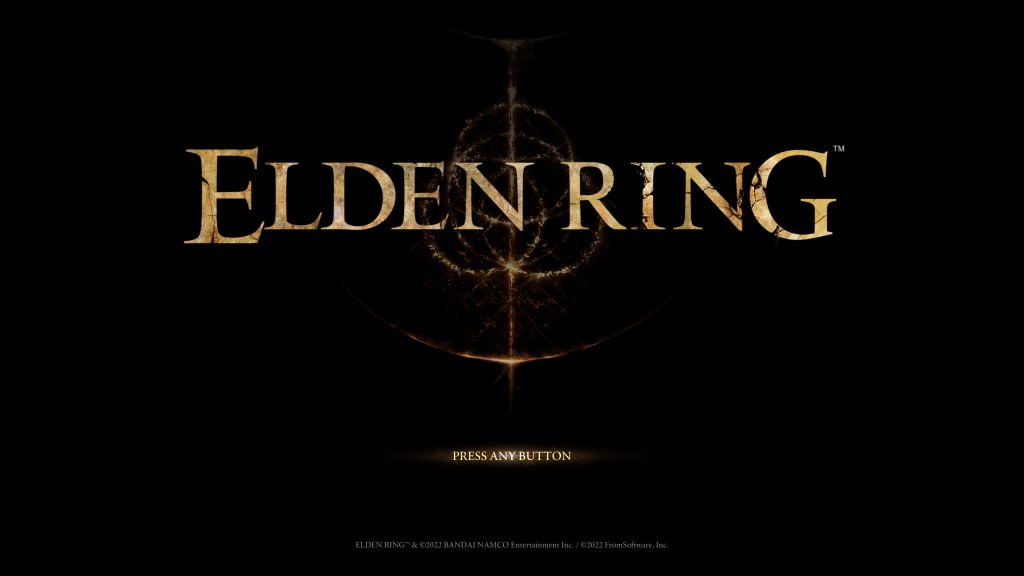
#5: Elden Ring, developed by From Software, is the latest and most ambitious “Souls” entry to date. It also feels like a culmination of everything From Software has been working towards since the 90s. As of late, I’ve had a love/hate relationship with their games. From Software is a developer that is near and dear to my heart. I have fond memories of bringing our original PlayStation to the shore so that my brother and I could play King’s Field II late at night after coming back from the boardwalk. We bought a PS2 for Eternal Ring and Evergrace, From Software’s not-so-popular PS2 launch games. We would later import Shadow Tower Abyss, the Japanese-only sequel to Shadow Tower on the PS1, so that we could utilize a fan-made translation on a modded PS2 and experience it in all of its obscurity. Prior to Demon’s/Dark Souls, From Software used to be known for a variety of games across multiple genres. During the PS2/GC/Xbox era, for example, we were graced with games like The Adventures of Cookie & Cream, Lost Kingdoms and Otogi. Today, From Software is a Souls-pumping machine and outside of a few experimental projects (see Déraciné or Sekiro: Shadows Die Twice to a lesser extent), From Software isn’t the company they used to be and for most of the community and industry at large, it appears to be for the better. The most impressive thing about Elden Ring is probably its open world and how it differs from its contemporaries.
Elden Ring is essentially From Software’s take on Elder Scrolls, more so than say Nintendo’s The Legend of Zelda: Breath of the Wild or Guerrilla’s Horizon series (which everyone can’t resist making comparisons to). There are what the game considers “legacy dungeons”, which are essentially the size of the main areas from Demon’s Souls, for example, but they’re integrated/placed within a much larger overworld filled with its own smaller areas, tombs, ruins, encampments and other eye-catching landmarks. With that said, the first 30-50 hours or so, the developers do a good job of disguising the repeated ideas/concepts. There are these 4-legged, stone monuments that stomp across the land in various spots, for example. It’s an incredible moment the first time you witness these monstrosities, but once you see the 6th or 7th “one of these”, the honey moon phase quickly comes to an end and then there’s only pain and suffering. Elden Ring may be more approachable than some of the other games in the series (if you get lost in one area or if you’re struggling at a particular boss, you have many more options in terms of “finding something else to do”), but at some point, you have to defeat some of the main bosses in order to proceed and like any other Souls game, it’s not easy. I completed the game at Level 147 with nearly 110 hours logged. I uncovered most of the map and beat all of the “secret” bosses that netted trophies. I did as many side quests as I could and did not resort to a guide until I reached the end of the game (just to see what I could mop-up before attempting the final boss). I earned the Elden Lord ending and nearly met all of the conditions for one of the secret endings.

#4: SOL CRESTA, developed by Platinum Games/Hamster, is a sequel to the 1980’s cult-classic arcade shooters, Terra Cresta and Moon Cresta. The main gameplay gimmick/mechanic that separates SOL CRESTA from other arcade shooters is its formations. Once you’ve assembled your three ships together, you can collect formation chips which grant you the ability to transform into different attack variations. While it doesn’t seem like these formations are required to engage with on the lower difficulties, they definitely give the player the upper hand. These formations almost act like traditional screen-clearing bombs in other arcade shooters, but you have much more control over them. There are 5 formations total and the chips are color coded with a secret, powerful formation that becomes available once you unlock the others. Your ships are blue, red and yellow and there are special enemies/crates that can only be destroyed by the same colored firepower. There’s even special rings to fly through which grant the player more bonus points if you fly through them with the correct colored ship. Giant rocks/meteors, for example, are destroyed more easily with the yellow ship, as its missiles are drill-like weapons.
I played through Normal difficulty stage by stage until I got to the final level. After I beat the final boss and the credits rolled, the game automatically loops you back to the start of the game on the next difficulty. For whatever reason, although I was exhausted from beating my head against the wall during the final boss on Normal, I decided I would keep playing until I lost all of my lives as my high score carried over from the previous run. Nearly an hour later and well after midnight, I played through the entirety of Hard difficulty in another sitting and unlocked Platinum Hard mode. I eventually ran out of steam by the second level on this difficulty, but I just couldn’t stop playing and I would have kept going if I had the energy for it. SOL CRESTA had its hooks in me and I finally understood how to play the game. Although there’s a ton of replay incentive in the base game, the “Dramatic” story DLC is a tough sell, however. For $10, you play through the same levels that are available in Arcade mode, but with a few extra twists.
For one, there’s Japanese VO and cutscenes that make an attempt at telling a story. It’s mostly anime, space opera nonsense, but it has the same banter/chatter you’d hear when playing through a mission from Platinum Game’s very own The Wonderful 101. The problem, however, is that unless you can understand the Japanese language, it’s nearly impossible to pay attention to the dialogue in the upper right/left corners of the screen. All of the dialogue is located underneath the character portraits and when you’re playing an intense arcade shooter, it doesn’t really lend itself to reading (unless you’re a master at hand eye coordination and multitasking). The game does only allow you to play through the story mode on Easy or Normal difficulty, so it never gets too intense (but it’s still challenging). It also appears that the story mode stages add additional slow moving, less enemy populated sequences during most of the cinematics, so they knew players couldn’t reasonably play & read at the same time. It still would have been nice to have English VO, but perhaps it wasn’t in the budget (although they did charge $10 for this, so what gives?). The final boss in the DLC is much more difficult than the regular game, so I’m glad I powered through and saw the “true” ending. SOL CRESTA is one of my favorite games of the year and it’s a shame Platinum Games has had such a poor image lately (due to Babylon’s Fall and the PR leading up to Bayonetta 3’s release) because this game is genuinely good and worth your time.

#3: A Plague Tale: Requiem, developed by Asobo Studio, is the sequel to A Plague Tale: Innocence. Similar to games like Uncharted and The Last of Us, A Plague Tale is a 3rd-person, action-adventure game with a strong emphasis on story and characters. Requiem, similar to the first game, takes place during the French Inquisition and the black plague. With each new generation, it’s always been about more pixels, polygons, higher framerates and better visuals. At the launch of the PS4, for example, Knack and Resogun were conversation pieces for the simple fact that they had a TON of polygons and pixel-like voxels on display, respectively. I never thought a generation later that the amount of rats on screen would be the next milestone in showcasing new hardware, yet here we are. The rats are back in A Plague Tale: Requiem and they’re everywhere, but this time you have more tools to deal with them. When the game is not funneling the player from one rat-infested encounter to the next, you’ll have the opportunity to explore the environment, find hidden items, discover side quests and listen to additional dialogue that helps flesh out the world and its characters.
If you’ve played Innocence, Requiem plays more or less the same. While A Plague Tale is arguably a stealth game at its core, you do have a variety of weapons at your disposal including a crossbow, slingshot and alchemy-related items. The biggest addition to the combat system is that you can now possess the rats to do your bidding. You can also kick enemies into piles of rats, if you’ve unlocked the appropriate ability. A Plague Tale: Requiem does something smart with its character progression. Although they’ve introduced a variety of skill trees for Amicia, how you unlock new skills feels extremely organic compared to its contemporaries. Instead of pumping experience/skill points into your character’s skill trees like in other games, you’ll naturally gain experience during combat encounters based on how you approach each scenario. If you stealth your way through a combat section, for example, you’ll gain more abilities that make sneaking more efficient. Although there is a menu that shows your progress, there’s no experience bars or visual indicator filling-up the screen while you play, so the immersion is rarely broken.
Requiem looks like a true “next-gen” game and while it has incredible art direction, the game still feels like it’s structured like a game from the last generation or two. Just like the first game, the sequel is still chapter-based complete with a chapter select so that you can return to previous levels for missed collectables. Some chapters are longer than others, but the game is quite lengthy and paced fairly well. During most chapters, big metal doors separate one major encounter from the next and the sequence becomes a bit repetitive and predictable the further you progress. There is also a lot of sequences where you’re shimmying through small crevices which, from an arm-chair perspective, feels like they’re used to mask loading times. From an environmental artist’s point-of-view, however, these sequences funnel the player into some beautifully shot vistas and the game is simply gorgeous.
A Plague Tale: Requiem is one of my favorite games of the year. It’s one of the few games in 2022 that made me put the controller down just to soak in the atmosphere. The game is gorgeous, the cast and performances are stellar, the set-pieces are impressive and the combat is more refined than its predecessor. It also helps that Olivier Deriviere once again did an amazing job with the soundtrack. I completed the game on Hard difficulty, but didn’t collect/upgrade everything there was to do. The ending was quite depressing, however, and they clearly leave the story open for future games. There’s a New Game+ mode to tackle down the road, so I’ll definitely be taking another trip with Amicia and Hugo sometime soon.

#2: Kirby and the Forgotten Land, developed by HAL Laboratory, is the latest installment in the long-running franchise. I never thought I’d be doing perfect dodges into counterattacks in a Kirby title, like it’s some character-action game, but here we are. Kirby has tiptoed around the third dimension on a few outings; whether it was the 2.5D found in Kirby 64 or the top-down, 3D perspective of Kirby Blowout Blast on the 3DS, the pink puff hasn’t fully committed to a proper 3D adventure until now. With that said, the game is still very much level-based and the stages feel more like something out of Super Mario 3D World than say Super Mario 64 or even Super Mario Odyssey. Outside of the game being fully 3D, the biggest draw in Forgotten Land is Kirby’s new power called “Mouthful Mode”. Similar to how Mario uses his cap to absorb the powers of enemies, objects and things in Odyssey, Kirby can simply inhale special items and take advantage of their properties. Take a traffic cone, for example, when Kirby devours the cone, it grants him the ability to hop along and use the tip of the cone to break cracks in the environment in order to access new areas or solve simple puzzles. Like most Kirby games, the challenging content is found in the post-game and defeating the true final boss was such a memorable experience. I completed Kirby and the Forgotten Land at 100% and enjoyed every second of it.

#1: Bayonetta 3, developed by Platinum Games, is the long-awaited, highly anticipated sequel fans have been waiting for. Right out of the gate, it’s clear that Platinum Games had a lot of confidence and passion for what they were creating. Each game in the series has always had an over-the-top, big set-piece style introduction sequence and Bayonetta 3 is no different. The game starts strong and it rarely pumps the breaks; the music is incredible, the combat is arguably better than its ever been, the set-pieces are super ambitious, and the enemies are still introduced and encapsulated in a classy-looking bestiary of sorts. With that said, after a very long development cycle and some PR drama leading up to the release of the game, Bayonetta 3 delivers and provides a satisfying conclusion, but not without a few missteps along the way.
One of Bayonetta 3’s biggest problems is that it feels like it’s trying to do too much and by no fault to the developer, it also feels like it’s limited by the hardware of choice. Bayonetta 3 is both a multiverse and globetrotting game. Similar to the previous games, Bayonetta 3 reaches its climax four to five times over the course of its twenty-some chapters. Every four chapters has the player visiting new locations around the world, meeting new Bayonetta’s with their own personalities and weapons culminating in epic boss fights that each feel like final bosses from any other game. The combat is still at its best when you’re playing as Bayonetta, but this time you can call kaiju-like demons to fight alongside you. While the screen can feel busy and cluttered at times, incorporating giant beasts into Bayonetta’s traditional character-action game combat was so eloquently implemented and no one but Platinum Games could have pulled it off.
Bayonetta 3 is incredibly ambitious and I feel that it deserves to be praised for the risks it took. It’s clear that Platinum Games had to make some concessions when bringing Bayonetta back to the Switch, unfortunately. The environments can look a little drab/colorless, but it’s not without some great art/cinematic direction. Yuji Shimomura and company did an amazing job with the cutscenes and cinematic choreography in Bayonetta 3. Everytime Bayonetta and company are on screen, you can’t look away. Despite some of the bland environments, the artists did a decent job highlighting certain areas to cover the blemishes, too. The smoke coming out of destroyed buildings in the Tokyo chapters, for example, have streaks of neon green running through them, which gives the destruction some extra flair. Can we also talk about the amazing soundtrack, specifically the battle theme? Every time it starts, it sends chills down my body and fills me with adrenaline. I can’t not play this game unless my speakers are blasting.
Bayonetta 3 introduces a new playable character, Viola, who is simply a not-as-fun to play Nero from the more recent Devil May Cry games. She’s sort of a wannabe Travis Touchdown from No More Heroes who doesn’t feel as snappy as Bayonetta. Her Witch Time also requires an almost perfect parry to initiate which can lead to some extremely frustrating moments during combat (especially if you’re trying to complete all of the optional challenge verses). In pure Platinum Games fashion, there are also a ton of alternative gameplay modes/mini-games spread throughout the campaign, including a scenario where you play as Jeanne in a sort of 2D, espionage-like series of missions. None of these side diversions are necessarily bad and none of it compares to the horribly dated QTEs from the first game (that could ruin an entire Pure Platinum run of a mission), but most fans just wanted more Bayonetta and she’s surprisingly not as present here.
Platinum Games has been carrying a particular torch from their PS2 Capcom/Clover Studios days and it’s a flame that I can’t quite put out. Even with all of its missteps and questionable decisions, Bayonetta 3 kept me up passed my bed time, and as a mid-30s something, I can’t say that for a lot of games today. The final sequence and ending left me a bit choked-up and teary-eyed for reasons I won’t spoil here, but the future looks bright for Bayonetta & friends and I can’t wait to see where they go next with the franchise.

See you next year!
-Matty